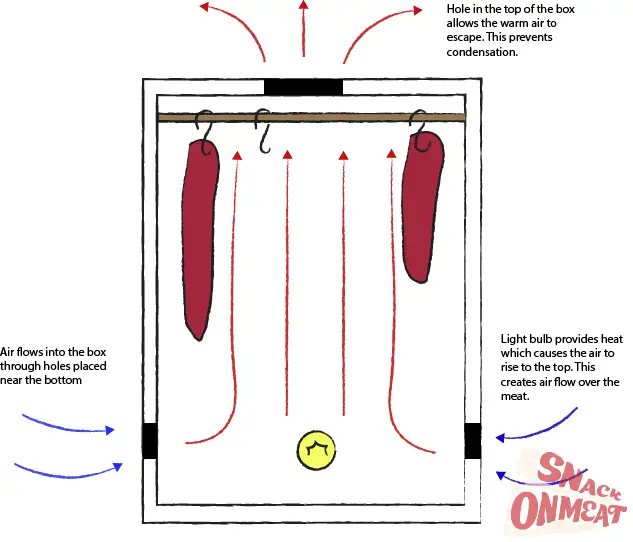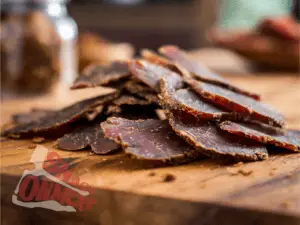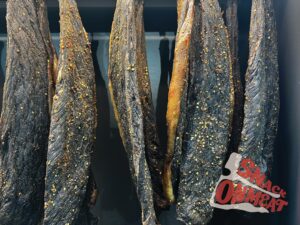Biltong is an amazing and delectable snack that started with surprisingly humble beginnings. They forged biltong from necessity and with minimal recourses. Because of this, you can make biltong as simply or as expensive as you like.
There are various methods of drying biltong, those being as simple as hanging in a window or as precise as a custom biltong box. The major factor is that biltong needs airflow to dry. All drying methods must ensure efficient airflow to move consistently over the meat. This is important for preventing mould and ensuring an optimal drying time.
The practice began with early Dutch explorers in South Africa. They cleverly hung their cured meat from trees to dry in the warm breeze. Today, we replicate the principles used by the pioneers, but with diverse methods depending on budget, time, and a desire for experimentation.
Some people are looking for a way to make biltong as simple as possible, while others want the pleasure of building and experimenting. Depending on how much time or money you have, there is a technique of drying biltong for you.
The Many Ways To Dry Biltong
You can dry Biltong anywhere with sufficient air-flow and moderate temperatures, such as in a ventilated room or a protected enclosure such as a biltong box. Traditional makers of Biltong created it without complication and with the bare basics. The early South African pioneers made biltong as they required a way to preserve meat while exploring the country. The nomadic conditions meant limited recourses and clever ingenuity. Because of this, biltong making is an accessible practice for anyone who wants to try it. Minimal is required as long as you have access to a good cut of meat and a means for providing simple drying conditions.
Traditional Drying
The original method for drying biltong was to hang the prepared meat from trees. The temperate conditions in South Africa provided the perfect warm breeze to dry the meat to perfection. If you’re wondering how they kept flies and pests away (This would be impossible in Australia) They asked the children to hang around and swat away flies with tree branches.

Do It Yourself
Today, we replicate the method of curing and drying the meat by providing an efficient airflow and a moderate temperature (between 25-30 degrees c). We can do this mechanically or with naturally occurring conditions if you’re lucky enough to have them. One thing to always consider is keeping away flies and other pests. You don’t want flies laying their “babies” on your precious drying meat!
Frame With Fly Mesh
A fly mesh-covered frame is a natural method but with protection from pests, rather than hanging your meat from a tree or window sill. You can build this frame from any wood you have lying around, or you can buy some lengths of pine. Construct a box frame that is tall enough to hang pieces of biltong, usually taller than 50 centimetres. Next, you cover the frame with fly mesh. Cut panels and staple them to the frame, but don’t forget to create a door to take your biltong in and out. You will need warmer conditions for this method and a breeze flowing through. Alternatively, you can place a fan to blow air over the meat (but don’t position the fan directly, as this can cause case hardening).
Storage Tub
Making your own biltong box from a storage tub is probably the most popular and, in my opinion, the most practical (and fun). Here is a fantastic video tutorial that I have followed and can guarantee that it makes great biltong. This is also very inexpensive. (If inexpensive caught your eye, here’s an article on why making biltong is cheaper than buying)
Wooden Biltong Box
A wooden biltong box is for those who really enjoy DIY and might have a bit of experience with the tools! You absolutely can go right in and make one if you’re a beginner. Don’t let me stop you. There are some fantastic instructions for making a wooden biltong box on instructibles.com. I have seen one where someone bought a wooden box with a door on Amazon and turned it into a makeshift biltong dryer, easy as pie. You will need to buy wood, a light bulb, and a lightbulb socket with a cord and plug. A small computer fan also with a cord that can connect to electricity (a fan is optional, but recommended for better airflow). You’ll also need a wooden dowel, some meat hooks and the necessary tools.

Simply buying
If you want to jump straight in, without having to do any hands-on work (besides putting together pieces) then buying a biltong dryer is for you. Biltong dryers start cheaply from around $100 and go upwards from there. If you want to go all out, you can buy a state-of-the-art custom-made biltong dryer for around $600. These boxes work the same way as the DIY versions. The difference is they’re pre-made and save you some hassle.
Related Posts:
- The Truth About Beef Jerky And Your Health
 A favourite among outdoor enthusiasts for its transportability, for fitness enthusiasts for its high protein content, and for those simply seeking …
A favourite among outdoor enthusiasts for its transportability, for fitness enthusiasts for its high protein content, and for those simply seeking … - Kangaroo Biltong: How To Make It
 We all know beef, game, and ostrich are the most traditional meats used for biltong, yet there’s an intriguing meat choice …
We all know beef, game, and ostrich are the most traditional meats used for biltong, yet there’s an intriguing meat choice … - What Is Biltong? Everything You Need To Know
 In the world of savoury snacks, one delicacy stands out for its unique flavour profile and rich history – Biltong. Hailing …
In the world of savoury snacks, one delicacy stands out for its unique flavour profile and rich history – Biltong. Hailing …






